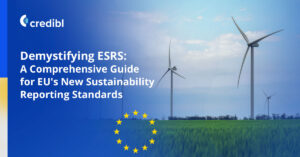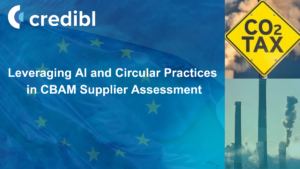In recent years, Environmental, Social, and Governance (ESG) factors have emerged as a crucial consideration for investors and financial institutions worldwide. As a result, ESG investing is becoming more mainstream, with fund managers, asset managers, and investment banks all looking to incorporate ESG factors into their investment decisions.
The influence of ESG considerations on financial markets cannot be ignored, as it has the potential to create ripples that can significantly affect investment decisions. In this blog post, we will explore the concept of the “Butterfly Effect” concerning ESG and its implications for fund managers, asset managers, and investment banks.
Understanding the Butterfly Effect
The Butterfly Effect, originally coined in chaos theory, suggests that a small change in one part of a system can have significant and far-reaching effects on the entire system. Similarly, in the context of ESG and financial markets, seemingly minor ESG-related factors can lead to considerable consequences across various industries, companies, and investment portfolios.
The rise of ESG investing is having a ripple effect across financial markets. For example, ESG factors are now increasingly being used to value assets, and ESG-related research is becoming more sophisticated. As a result, ESG investing is becoming an increasingly important part of the investment landscape.
Why are ESG factors important?
There are several reasons why ESG factors are important to investors. First, there is a growing consensus that ESG factors have a material impact on financial performance. For example, a study by the Harvard Business School found that companies with strong ESG ratings outperformed the market by an average of 3.6%* per year over 15 years.
Second, there is increasing pressure from investors, customers, and employees to invest in companies committed to sustainability and responsible business practices. A recent survey by the Morgan Stanley Institute for Sustainable Investing found that 81% of institutional investors believe that ESG factors are imperative to their investment decisions.
Third, ESG investing can help to mitigate risk. For example, companies with strong ESG ratings are less likely to be exposed to reputational risk, which will have a significantly positive impact on their financial performance.
Let’s see how ESG is changing financial markets:
- Asset and fund prices are now influenced by ESG factors, such as a company’s carbon emissions or its commitment to diversity and inclusion. This is because investors are increasingly looking to invest in companies that are aligned with their values and taking steps to mitigate environmental and social risks.
- ESG-related research is becoming more sophisticated. There is mounting evidence examining the impact of ESG factors on financial performance. This research is helping investors to better understand the risks and opportunities associated with ESG investing.
- ESG investing is becoming an increasingly important part of the investment landscape. The amount of money invested in ESG funds has grown significantly in recent years. In 2022, global ESG assets under management reached $35.3 trillion, up from $22.9 trillion in 2020. This growth is expected to continue in the years to come, as more and more investors recognize the importance of ESG factors to financial performance.
The Butterfly Effect of ESG is causing ripples across financial markets, altering investor preferences, regulatory landscapes, and investment strategies. The rise of ESG means that fund managers, asset managers, and investment banks need to be aware of the ESG factors that can impact financial performance. They also need to be able to assess the ESG risks and opportunities of the companies in their portfolios with relevant and local standards. In addition, they need to be able to communicate the ESG aspects of their investment products to investors. Embracing ESG helps mitigate risks and creates opportunities for financial institutions to thrive in an increasingly conscious and sustainable world.
Credible ESG for Fund Managers, Asset Managers, and Investment Banks
Credible provides a comprehensive ESG portfolio alignment solution that offers a thorough analysis of the ESG impact of investee companies, along with extensive reporting based on established ESG frameworks such as TCFD, SASB, GRI, and others. Credible’s ESG solution for Fund Managers aims to assist fund managers in effectively integrating ESG considerations into their investment process, thereby enhancing risk management.







